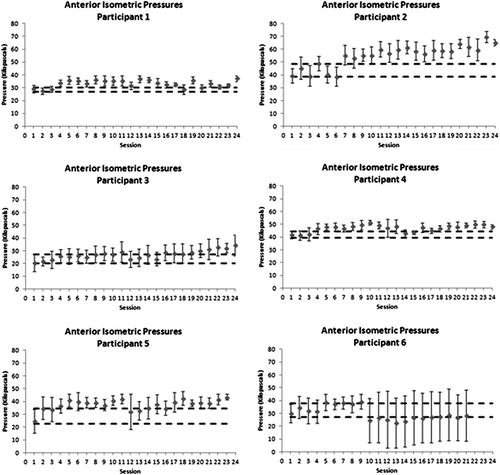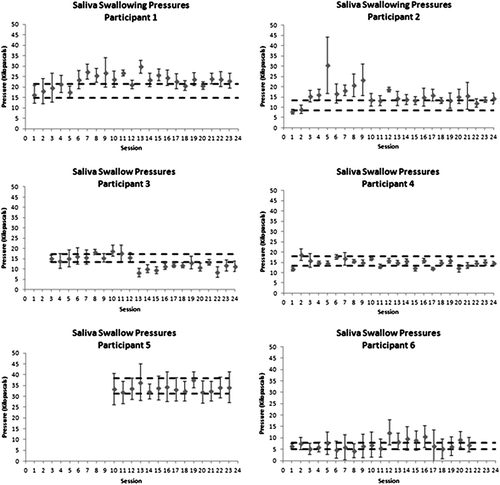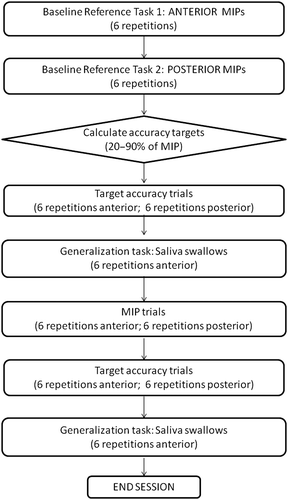Figures & data
Table I. Participant demographics and baseline videofluoroscopy impairment profiles.
Table II. Baseline swallowing status from pre-treatment videofluoroscopy.
Figure 2. Control charts showing progress in anterior maximum isometric tongue–palate pressures over the course of therapy. Dashed horizontal lines indicate a moderate effect size band around baseline performance, used as a threshold to determine whether there was evidence of change in the form of at least three consecutive data points exceeding the effect size band.

Table III. Baseline measures of tongue strength (means and standard deviations) calculated over the first three treatment sessions, with 12 repetitions of each task per session.
Figure 3. Control charts showing progress in posterior maximum isometric tongue–palate pressures over the course of therapy. Dashed horizontal lines indicate a moderate effect size band around baseline performance, used as a threshold to determine whether there was evidence of change in the form of at least three consecutive data points exceeding the effect size band.

Figure 4. Control charts showing progress in saliva swallowing pressures over the course of therapy. Dashed horizontal lines indicate a moderate effect size band around baseline performance, used as a threshold to determine whether there was evidence of change in the form of at least three consecutive data points exceeding the effect size band.

Table IV. Post-treatment swallowing outcomes from videofluoroscopy, by participant.
